Need more Leads?
Invest in professional marketing services from WebFX and kick your company’s growth into high gear.

Slumped at your desk with a second cup of coffee and sore eyes from scowling at your screen, you try to fill the page with words that will persuade a future web visitor to make a purchase. Unfortunately, the right words refuse to come out.
Does this sound familiar?

In sales and marketing circles, it’s become trendy to praise great copywriting as the secret weapon that divides successful brands from the rest of the pack. Sure, “write words that sell” is sound copywriting advice. Well-written landing pages, cold emails, and sales enablement content are critical to converting leads into customers.
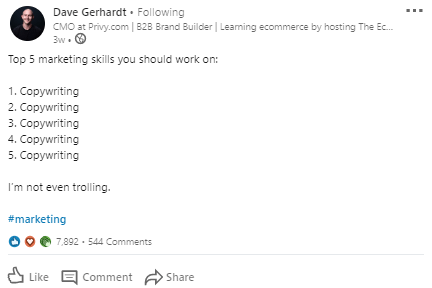
Tell ’em, Dave.
But if you’ve ever put pen to paper, you know that writing high-converting sales copy isn’t that simple, is it?
The good news is: It’s not rocket science either. Even as a beginner or a “non-writer,” you can use the powerful mindset shifts and formulas in this post to quickly boost the quality of your sales copy.
Let’s go.
Words are powerful, and choosing the right words can make or break your business.
More and more businesses understand the value of great sales copy and invest time and money to craft the perfect message in words.
Small and enterprise businesses alike spend top dollar for effective sales copy. Citi Bank reportedly spent $1 billion for a series of marketing posters – with the sole goal of building trust with their target audience.
Consider sales copy an important investment that could yield significant returns when done right.
Sales copy begins well before you write your first word. Preparation can save you lots of headaches and money and is a crucial step to writing incredible marketing messages.
Here are a few ways you can prepare before you start writing your business copy.
If you don’t understand who you’re talking to, you run the risk of sending a message that’s lukewarm at best, and downright offensive at worst.
Creating a customer profile–or buyer persona– can help you keep your audience top of mind as you work on your copy. Using past sales data, you could paint a picture of who you’re aiming your message toward–your target audience demographics.
Keep your customer persona in mind as you write your copy to create a focused and more effective message.
Next, you want to personalize your copywriting message to meet the customer where they’re at in the buyer’s journey.
Identify where in the sales funnel your target audience is. Is the audience new to your brand, or have they had interactions with your business before? How ready are they to buy your product? What is their level of trust in your brand?
Tailor your copy to guide your audience in each stage of their journey – from awareness to decision.
With your customer profile/buyer persona and awareness level, you have the foundations upon which you can create a stellar marketing campaign. Next, we want to focus on another key aspect of good copywriting: the introduction.
First impressions are key to holding attention, and sales copy is no different. Here are some key things to keep in mind to make sure your introduction is solid and compels the reader to move to the next section of your copy.
About 80% of your copy readers will stop at the headline without reading further, even if it’s the best piece of writing in the world.
So your headline has the heavy task of making sure your brand is memorable enough for a second look. Some tips for writing headlines include:
A study by Elizabeth Loftus wanted to test if word selection could influence eyewitness testimonies. In the test, subjects were shown a video of different car accidents. After watching, they were asked, “about how fast were the cars going when they smashed into each other?”
All subjects were asked the same question, although the word “smashed” was replaced with verbs of varying power like:
Researchers found that when stronger verbs like “collided” and “smashed” were used, witnesses estimated higher speeds. They were also more likely to falsely report that there was broken glass at the scene, despite there being no glass shown in the film.
As shown in the research above, a single word change can have a drastic impact on perception. When you’re trying to get someone to take action, it has the power to instantly increase or decrease conversion rates.
Pick your words carefully. Once you’ve written a solid first draft and you’re happy with your message, go back and inject vigor into your writing with these 801+ power words.
The body of your copywriting piece has an important part to play. Each sentence of your copy has one job: get the reader to read further to the next sentence.
Make use of these tips to craft strong body copy.
When you’re gazing into the abyss of a blank page, and you’ve yet to write a single sentence, it’s easy to wonder “What’s next?”
This is where the AIDA formula, popularized by copywriting legend Gary Halbert, can get the ball rolling. From start to finish, the formula structures the specific stages you must include in your sales page, email, or any piece of writing that aims to elicit a response.

Breaking down the “Workplace Analytics” landing page from conference room scheduling tool Robin, here’s what the AIDA formula looks like in action.

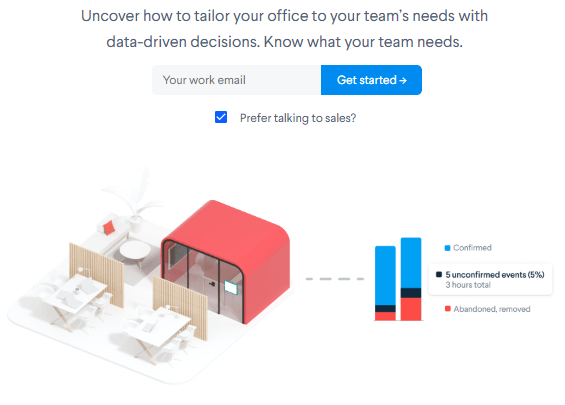
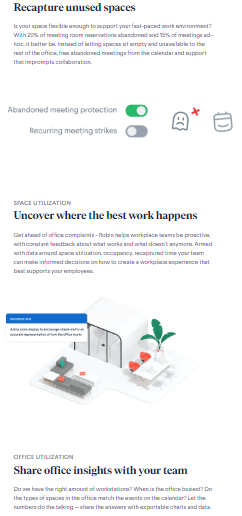

“Sell the hole, not the drill”.
Marketing copywriting tips like the above sound like absolute truths, but they still miss the mark.
As echoed by Peep Laja, founder of CXL, your copy should “Focus on articulating the value people will get. Make sure the copy makes it clear who it’s for, and what pain it helps to avoid, or gain it helps to achieve.”
While you might mention the “drill” or highlight the “hole,” neither of these are as powerful as drawing a line from the drill, to the hole, to a tangible result like kick-starting that first father-son DIY project, or putting up a new family portrait in your living room.
Effective copy connects all the logical and emotional dots to sell a successful experience to your prospect. One way to communicate this experience is to use the “so what?” hack.
Simply read through the features and benefits in your copy, pause when you talk about your product or service, and then ask yourself, “so what?”
This forces you to articulate the desirable experience that your product delivers.
Apple’s iPod ad is a classic example. The feature is “1GB of storage for MP3s.”

After asking “so what?”, however, this translates to “1000 songs in your pocket.”

Here’s another great example from Drift:
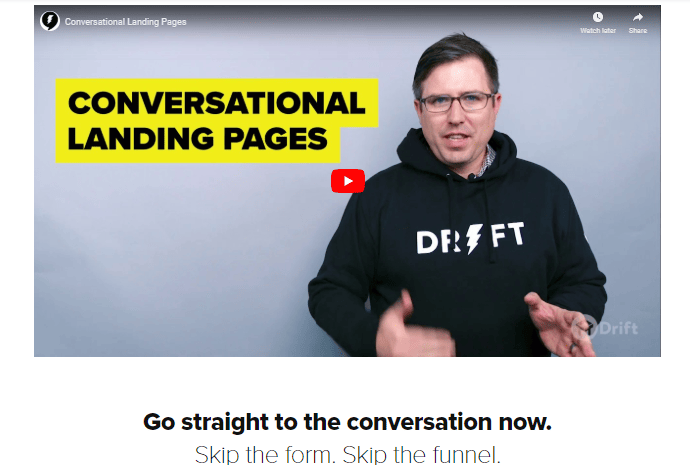
The features and benefits are “conversational landing pages” that speak to customers. If you ask “so what?”, this translates to bypassing the usual barriers between you and your customer and going “straight to the conversation now.”
Learn the email tactics that B2B sales pros use to hook their customers.

In the early 1900s, advertising pioneer Claude Hopkins cemented himself in copywriting history when he catapulted Schlitz beer from B-list brewer to #1 in sales.
At the time, most beer companies spouted identical claims about the purity of their beers. In the ad that blew Schlitz’s competition out the water, Hopkins took another route. Instead of making generic claims, he told the story behind the beer brand, and vividly described the distillation process to drive the “purity claim” home.
He detailed how the beer was cooled in a unique way that removed impurities. How each bottle was sterilized at least four times before being filled with Schlitz beer. Hopkins even drew attention to the fact they built a 4,000-foot well to supply water—even though the nearby Lake Michigan was a valid source.
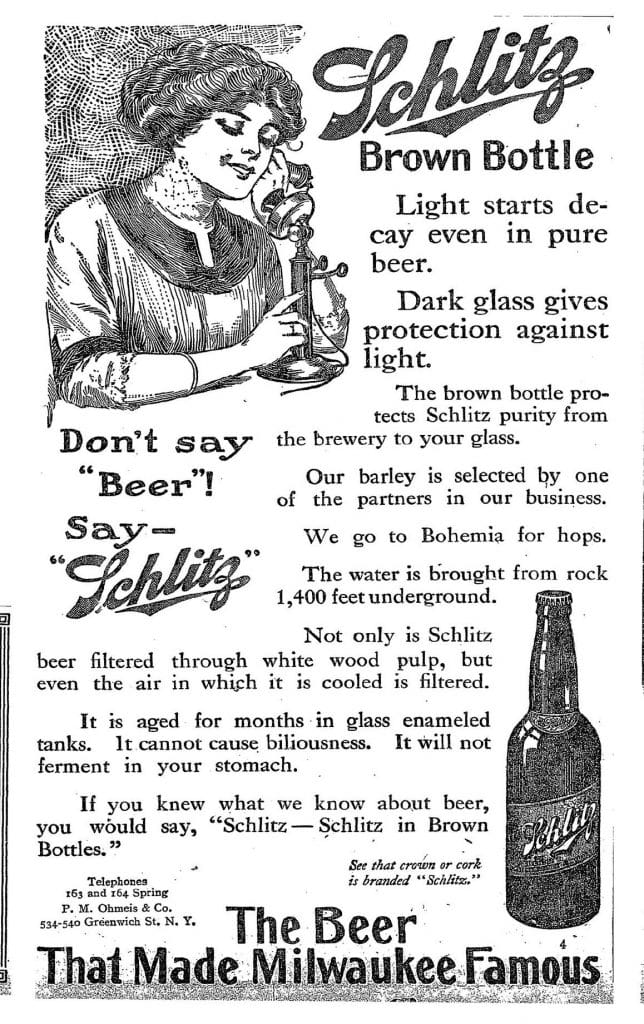
Compared to the blur of statements claiming “the purest beers,” there’s no competition. That’s the power of specificity in your copy or story. It sets you apart from the crowd and resonates with prospects. Because when everyone out there is shouting “super,” “proprietary,” and “exclusive”…then no one is.
If you want to convey a unique attribute about your product or service, use ultra-specific stories and descriptions to show—instead of tell—how you’re “the most advanced” or “highest quality.”
Just like in the headline copy, you want to keep your audience hooked on your every word by triggering strong emotional responses as they read.
Get into your reader’s shoes (it’s why we made the customer profile) and try to empathize with how they might be feeling as they read your copy. Incorporate storytelling elements to draw them in, using rich imagery and language.
When we asked email marketing copywriting expert Emily McGuire how non-writers can write high-converting copy, her biggest tip was:
“Write like you’re having the conversations you want to have with your ideal customers. It comes off more conversational, personable, and helps your readers address their pain points easy-peasy.”
Or, as Privy CEO Dave Gerhardt puts it, “Write like you talk.”
Conversational writing makes it easier for your prospect to connect with you. And it’s not about throwing in the f-bomb, or divulging personal information. It’s about making your message easy to understand. You can do this by:
Apps like Grammarly and Hemingway will also work to measure and refine how “conversational” your copy is. If you’re new to writing and want detailed feedback, go with the Hemingway app. It’ll summarize the reading level of your copy and mark complex sentences and bloated descriptions.
Joel Kettle, a veteran copywriter, and ex-CBC columnist, recommends that you take conversational copy one step further by actually sitting down with and talking to your customers:
“In reality, copywriting is a conversation between you and your customer. Your goal is to enter the conversation already happening in their heads.
“So to do that, here’s my simple tip: talk to customers in a structured way. Ask them about their pains, their desired outcomes, and the things that might keep them from buying. Document how they talk about those things (and which things they talk about) and use THAT to inform whatever it is you write.”
All the pretty, emotional, and relatable words won’t help credibility. Not to say that power words and good conversational tone won’t help your case–it does the job of getting your reader in a mindset to hear your pitch.
But at some point, they will be asking themselves, “How do I know this is legit?” That’s where social proof comes in handy. Real-life reviews, testimonials, and case studies ground your message in reality and help readers rationalize their buying decision.
The best case is to include reviews and testimonials straight from your past clients’ mouths (ensure you’ve asked permission to use their quotes). Get in detail if you can and show your reader step-by-step how your product or service solved a specific problem your client had.
Testimonials and reviews are made even more powerful with visual aid. A picture of your customer next to their quote is great. A video testimonial is even better.
After writing a strong introduction and body copy, it’s time to conclude your message and get your reader to take a desired action. Here are some ways to create a strong close to your copy.
A rule of thumb for writing a good CTA is to make it clear and keep it simple. For example, if you want your reader to sign up for a newsletter after they read your copy, you should make it clear by:
Of course, like with headlines, it’s best to experiment with your CTAs in order to tweak your message or request to maximize the number of conversions.
After you’ve written your first draft copy, you’ll want to go back and edit it a number of times before publishing it. Get feedback from your mentors and peers, and test it out to a small audience before launching it wider.
Check for grammar and spelling errors. Make sure it sounds conversational. Check the reading level of the text and keep it low.
Be prepared to regularly revise and refine to create the perfect message, even after you’ve already published a completed piece.
Here are some good acronyms that many marketers and copywriters use to edit their copywriting and strengthen their message:

Contrary to popular opinion, marketing copywriting isn’t an elusive art that’s accessible only to a gifted few. It’s more of science; one that focuses on understanding the conversation in your customer’s head and showing how you can help.
Using the sales copywriting tips above, you can still write sales copy that gets your prospects to act, even if you’re a beginner or don’t consider yourself a writer. Once you’ve finished writing, use this guide by Copyhackers to measure the persuasive power of each element in your copy.
Invest in professional marketing services from WebFX and kick your company’s growth into high gear.

Join 30,000+ other sales and marketing professionals. Subscribe to our Sell to Win newsletter!
 Email & Calendar Sync
Email & Calendar Sync
Use our calculator to add up your total investment of CRM and Add-ons
VIEW ALL PRICING
 Product Info
Product Info Education & Guides
Education & Guides Company
Company